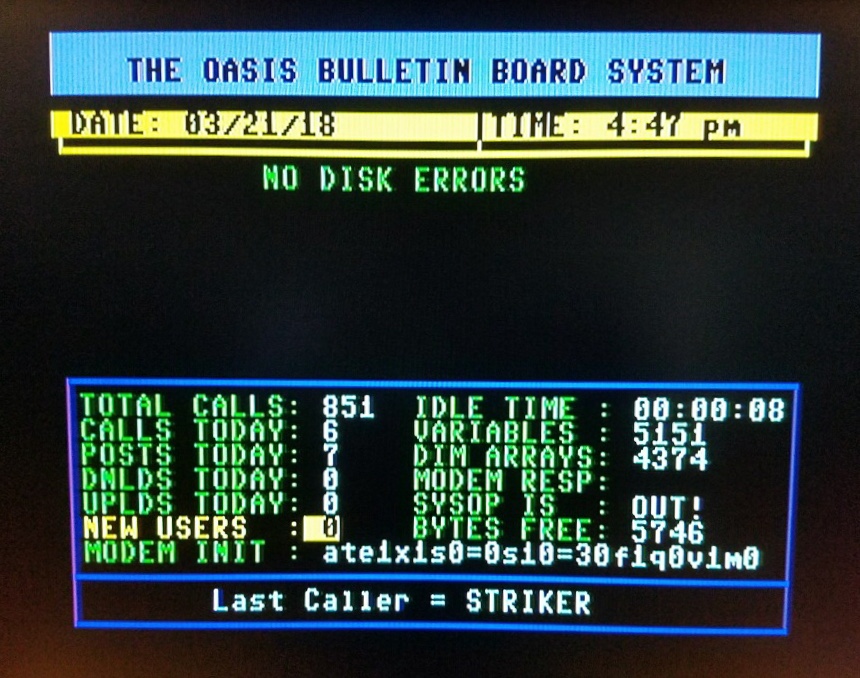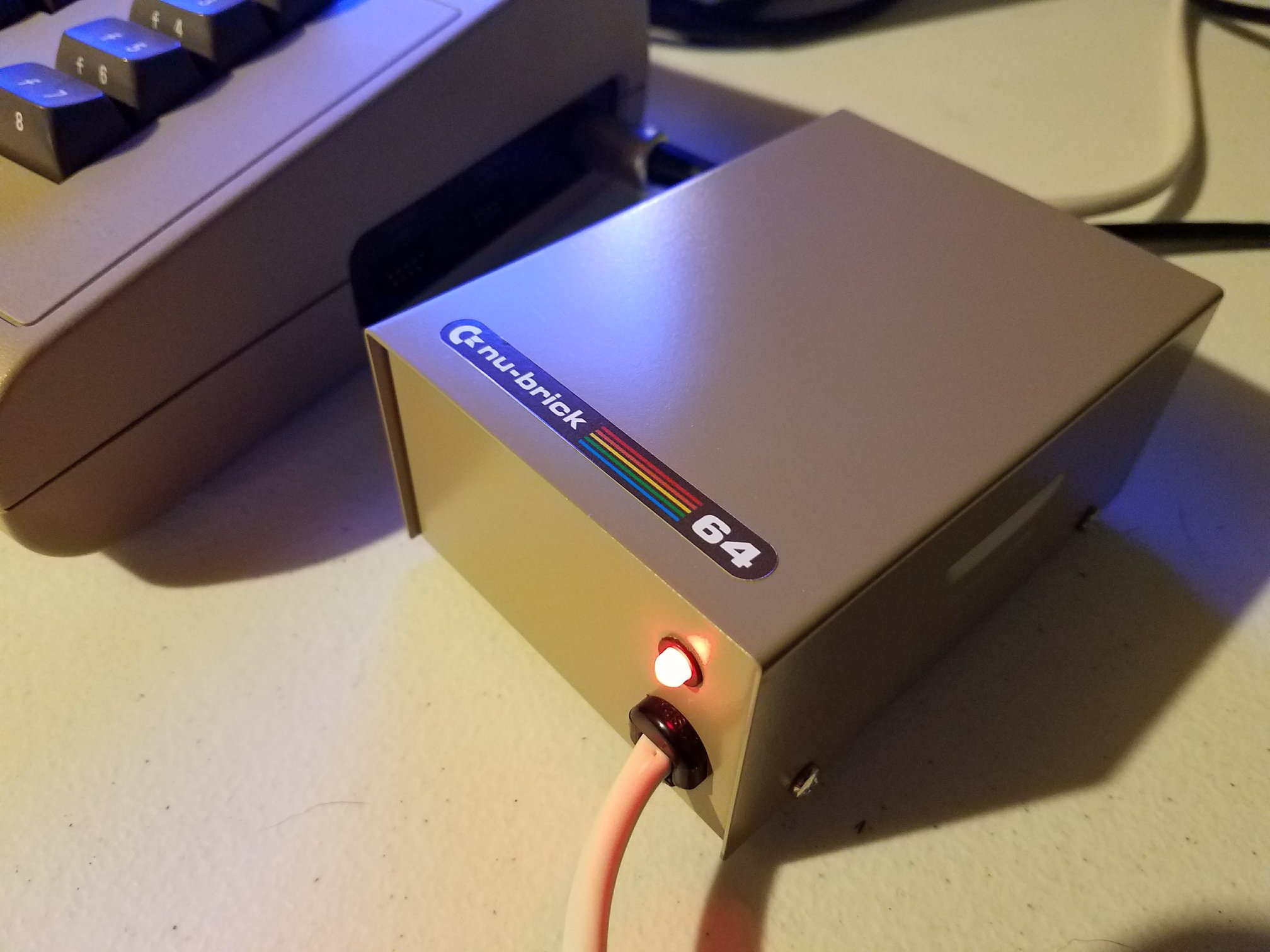Was looking to get another SCSI2SD card to upgrade another Lt. Kernal drive. When I went to the Inertial Computing site, I was redirected to Rabbit Hole Computing. Not a big deal since when I ordered the SCSI2SD units, the receipt had Rabbit Hole Computing on it.
https://store.rabbitholecomputing.com/SCSI-EMU-s/100.htm
Like many other items unavailable due to semiconductor shortages, the SCSI2SD have been out of stock for a long time. I noticed that there is a new card available called the ZuluSCSI v1.1, so I ordered one to play around with.
Fist thing I noticed is that the initial setup is a lot simpler than the SCSI2SD.
- Format an SD card on a PC using Fat32
- Download platformio.ini and zuluscsi.ini from the projects Github page
- Copied both files to the SD card
- Opened up a Command Prompt and used fsutil to create a blank 200meg image file which will be the file used for SCSI drive#0
- fsutil file createNew hd0.hda 204800000
- Ran fsutil a second time to create an image for SCSI drive#1
- fsutil file createNew hd1.hda 204800000
- Copied both hd0.hda and hd1.hda over to the SD card
- Made a few adjustments in the zuluscsi.ini file
- Replaced the internal hard drive in the Lt Kernal case with the ZuluSCSI card
- I ordered mine with a 3.5" faceplate, then had to get a 3.5" to 5.25" adapter from Amazon
- I also had to use brass PC Motherboard spacers to raise the height so that the hole in the Lt Kernal cover would line up with the ZuluSCSI
- Made a longer SCSI cable to reach the board in the back of the Lt. Kernal case
From there I used the same SysGen disk as I modified for the SCSI2SD drive. Sysgen installed without any problems. Copied many files over to different LU's and User's, all went well. I then copied over the Xetec PXE demo and it's been running it continuously for almost 24 hours now.
So far everything works great.
Hope this info is useful to anyone that is considering replacing their physical SCSI hard drive in their Lt Kernal.
Here is contents of the modified zuluscsi.ini file I'm using.
[SCSI]
# Settings that apply to all devices
Debug = 0 # Same effect as DIPSW2, enables verbose log messages
SelectionDelay = 0 # Millisecond delay after selection, 255 = automatic, 0 = no delay
PhyMode = 0 # 0: Best available 1: PIO 2: DMA_TIMER 3: GREENPAK_PIO 4: GREENPAK_DMA
#Dir = "/" # Optionally look for image files in subdirectory
#Dir2 = "/images" # Multiple directories can be specified Dir1...Dir9
#DisableStatusLED 1 # 0: Use status LED, 1: Disable status LED
# Settings that can be needed for compatibility with some hosts
Quirks = 0 # 0: Standard, 1: Apple, 2: OMTI, 4: Xebec, 8: VMS
EnableUnitAttention = 0 # Post UNIT_ATTENTION status on power-on or SD card hotplug
EnableSCSI2 = 1 # Enable faster speeds of SCSI2
EnableSelLatch = 0 # For Philips P2000C and other devices that release SEL signal before BSY
MapLunsToIDs = 0 # For Philips P2000C simulate multiple LUNs
MaxSyncSpeed = 0 # Set to 5 or 10 to enable synchronous SCSI mode, 0 to disable
# ROM settings
#DisableROMDrive = 1 # Disable the ROM drive if it has been loaded to flash
#ROMDriveSCSIID = 7 # Override ROM drive's SCSI ID
# Settings that can be specified either per-device or for all devices.
Vendor = "QUANTUM"
Product = "LPS210"
Version = "1.0"
Serial = "0123456789ABCDEF"
Type = 0 # 0: Fixed, 1: Removable, 2: Optical, 3: Floppy, 4: Mag-optical, 5: Tape
TypeModifier = 0 # Affects only INQUIRY response
#SectorsPerTrack = 38
#HeadsPerCylinder = 723
#RightAlignStrings = 0 # Right-align SCSI vendor / product strings, defaults on if Quirks = 1
PrefetchBytes = 8192 # Maximum number of bytes to prefetch after a read request, 0 to disable
# Settings can be overridden for individual devices.
#[SCSI2]
#Product = "Disk with ID2"
#[SCSI5]
#Product = "CD-ROM Drive"
#Type = 2
# If IMG0..IMG9 are specified, they are cycled after each CD eject command.
#IMG0 = FirstCD.iso
#IMG1 = SecondCD.iso
# Raw sector range from SD card can be passed through
# Format is RAW:first_sector:last_sector where sector numbers can be decimal or hex.
# If end sector is beyond end of SD card, it will be adjusted automatically.
# [SCSI4]
# IMG0 = RAW:0x00000000:0xFFFFFFFF # Whole SD card
One thing I immediately find very convenient. I can pop the SD card out of the ZuluSCSI, pop it into my laptop, and copy over both hd0.hda and hd1.hda onto my PC in seconds. Very fast backups of the hard drive images.
Short follow-up. I had a test BBS running for over 3 months now on a ZuluSCSI. No problems at all with it. Seems faster than the SCSI2SD when used with a Lt Kernal. So impressed with it, I upgraded the main BBS to use one.
-Mo
@commodoremo do you still have an image of that modified SYSGEN disk?
Everytime I run SYSGEN it gets to the 2nd or 3rd file/program and just stops. The floppy stops spinning and it hangs indefinitely.
I bought two of these drives, one for a Thunderdrive conversion and one for my Lt. Kernal. A G64 image of that disk would be most appreciated.
I've had that happen to me more than once. Found out that if I need to have nothing connected to my C64/C128 except a single 1541 drive set as device 8 and the LtK host adapter. It works a lot more reliably. Anything else on joystick, serial, user, or cartridge port gives me grief.
Let me know if this helps.








